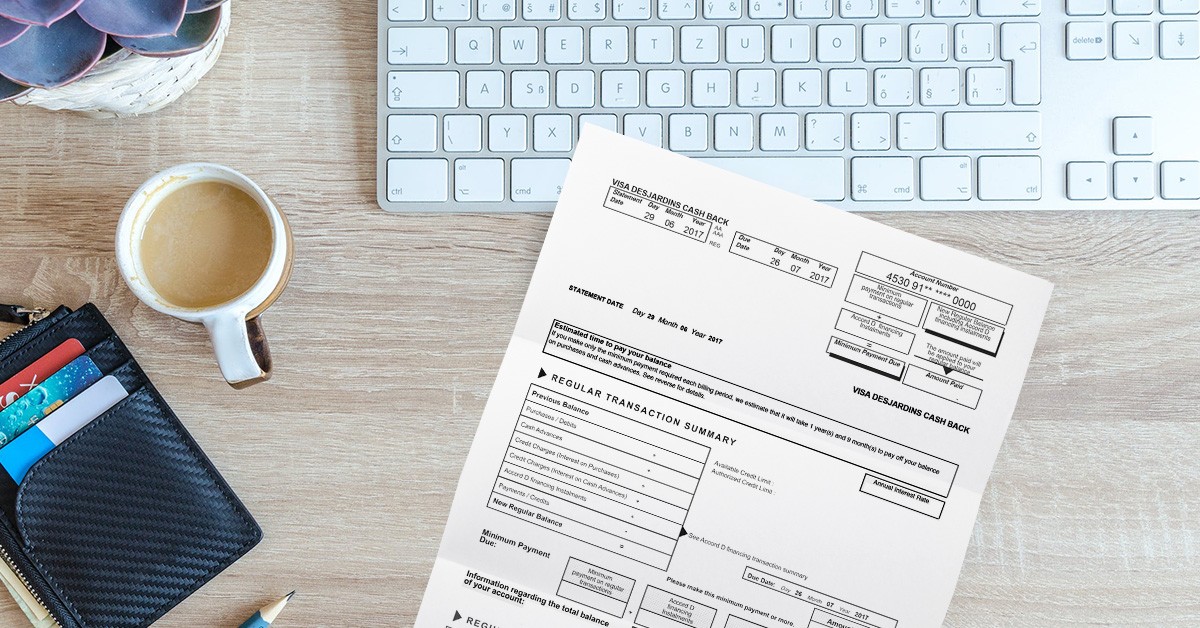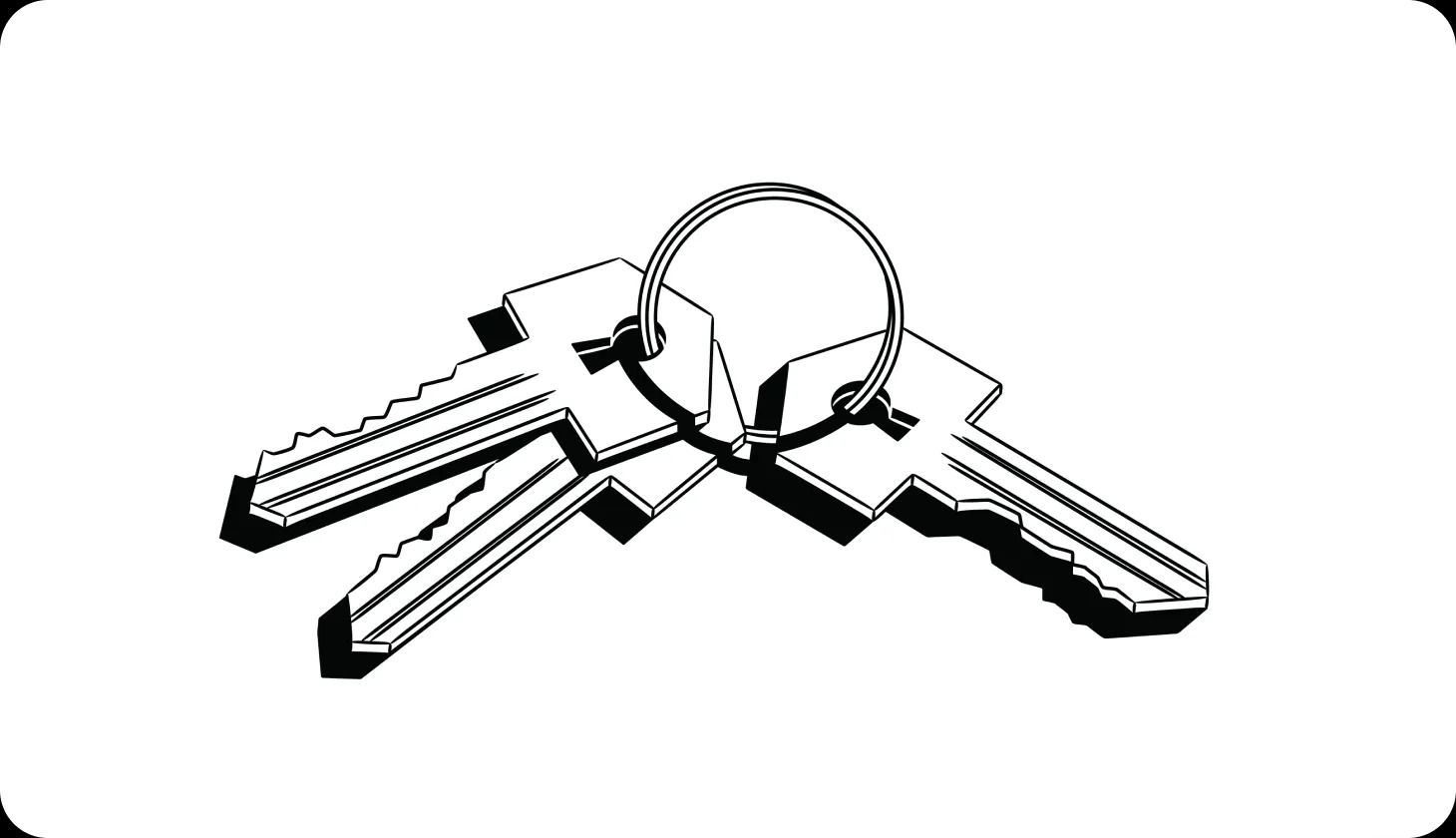Home>Finance>How Much Should You Spend On A $300 Credit Limit


Finance
How Much Should You Spend On A $300 Credit Limit
Modified: February 21, 2024
Looking to manage your finances with a $300 credit limit? Find out how much you should spend wisely to stay on top of your financial health.
(Many of the links in this article redirect to a specific reviewed product. Your purchase of these products through affiliate links helps to generate commission for LiveWell, at no extra cost. Learn more)
Table of Contents
Introduction
Welcome to the world of credit cards, where the financial decisions you make can have a lasting impact on your overall financial health. If you’re new to credit cards or have recently obtained a credit card with a $300 limit, you might be wondering how much you should actually spend. While having a low credit limit can be limiting, it’s essential to understand the factors at play and develop a strategy to make the most out of this opportunity.
When considering how much to spend on your $300 credit limit, it’s crucial to keep in mind that responsible spending habits can positively impact your credit score and open doors for higher credit limits in the future. On the other hand, careless spending can lead to financial hardship and the potential for a damaged credit score.
In this article, we will explore the factors you should consider when determining your spending on a $300 credit limit. We will also discuss budgeting strategies, credit utilization, payment history, credit limit increases, the consequences of overspending, and the implications for your credit score. By understanding these aspects, you’ll be equipped to make informed decisions and set yourself up for long-term financial success.
Remember, your credit is a valuable asset, and using it wisely can open doors for various opportunities, such as getting approved for loans, renting an apartment, or even securing a job. Let’s dive in and explore how to make the most out of your $300 credit limit!
Factors to Consider
When deciding how much to spend on your $300 credit limit, there are several important factors to take into consideration:
1. Income: Assess your income and determine how much of it can be allocated towards your credit card payments. It’s crucial to only spend what you can afford to repay in full each month to avoid falling into a cycle of debt.
2. Expenses: Consider your monthly expenses, such as rent, utilities, groceries, and transportation. Subtract these expenses from your income to get a clear picture of the disposable income you have available to put towards your credit card spending.
3. Financial Goals: Identify your short-term and long-term financial goals. Do you have any upcoming big-ticket purchases or savings targets? Allocating a certain amount of your credit limit towards these goals can help you stay on track.
4. Emergency Fund: It’s essential to have an emergency fund to cover unexpected expenses. Consider setting aside a portion of your credit limit towards building or replenishing this fund, ensuring you have a safety net in case of unforeseen circumstances.
5. Interest Rates and Fees: Familiarize yourself with the interest rates and fees associated with your credit card. High interest rates can quickly accumulate debt, so it’s important to budget your spending accordingly to avoid unnecessary charges.
6. Credit Limit Utilization: Utilizing a large portion of your available credit limit can negatively impact your credit score. As a general rule, aim to keep your credit utilization below 30% to demonstrate responsible credit usage.
7. Lifestyle and Priorities: Consider your lifestyle and spending priorities. Are there discretionary expenses that you value and want to allocate a portion of your credit limit towards? Make sure to budget for these while still staying within your means.
By taking these factors into account, you can make an informed decision about how much to spend on your $300 credit limit. Remember, it’s essential to strike a balance between enjoying credit card benefits and keeping your financial well-being intact.
Budgeting Strategies
Developing effective budgeting strategies can help you make the most out of your $300 credit limit. Here are some strategies to consider:
1. Track Your Expenses: Start by tracking your expenses to gain a clear understanding of where your money is going. This will help you identify areas where you can cut back and allocate more towards your credit card spending.
2. Create a Budget: Once you have a clear picture of your expenses, create a budget that outlines your income and how you plan to allocate your funds. Include a specific category for your credit card spending and aim to stay within a predetermined limit.
3. Prioritize Essential Expenses: Ensure that your essential expenses, such as rent, utilities, and groceries, are prioritized in your budget. These should take precedence over discretionary spending to ensure your basic needs are met.
4. Set Spending Limits: Determine a spending limit for your credit card each month and stick to it. It’s important to be disciplined and resist the temptation to exceed this limit, as doing so can lead to unnecessary debt.
5. Use Envelope Budgeting: Consider using the envelope budgeting method, where you allocate cash into different envelopes for various spending categories. This can help you visualize and manage your expenses more effectively.
6. Automate Payments: Set up automatic payments for your credit card to ensure that you never miss a payment deadline. This will help you avoid late payment fees and maintain a positive payment history.
7. Review and Adjust Regularly: Regularly review your budget and spending habits to assess if any adjustments are needed. This will help you stay on track and make necessary changes to meet your financial goals.
8. Seek Financial Advice: If you’re struggling to manage your finances effectively, consider seeking guidance from a financial advisor. They can provide personalized advice and help you develop a budgeting strategy that suits your unique situation.
Remember, budgeting is all about finding a balance between enjoying life and maintaining financial stability. By implementing these strategies, you can make the most out of your $300 credit limit while working towards your financial goals.
Credit Utilization
Credit utilization refers to the percentage of your available credit that you are using. It plays a significant role in determining your credit score and financial health. When it comes to your $300 credit limit, it’s essential to understand how credit utilization can impact your overall creditworthiness.
As a general rule of thumb, it’s recommended to keep your credit utilization below 30% of your total available credit. In the case of a $300 credit limit, that means you should aim to keep your monthly credit card balance below $90.
Why is credit utilization important? Lenders and credit reporting agencies use this metric to assess your creditworthiness. When you use a high percentage of your available credit, it can indicate that you may be relying too heavily on credit or that you may not have enough disposable income to cover your expenses. This can have a negative impact on your credit score.
On the other hand, maintaining a low credit utilization ratio demonstrates responsible usage of credit. It shows that you have control over your spending and that you can manage your debts effectively. This can help boost your credit score and improve your chances of getting approved for higher credit limits or other forms of credit in the future.
To keep your credit utilization in check with a $300 credit limit, here are some tips:
1. Pay your balance in full: Aim to pay off your credit card balance in full each month. By doing so, you keep your credit utilization low and avoid accruing interest charges.
2. Spread out your purchases: Instead of making one large purchase that utilizes a significant portion of your credit limit, consider spreading out your purchases throughout the billing cycle. This helps keep your credit utilization ratio low and manageable.
3. Monitor your statement balance: Be mindful of your monthly statement balance, as this is what is reported to the credit bureaus. Keeping it below 30% of your credit limit is a good practice to maintain a healthy credit utilization ratio.
4. Consider making multiple payments: If you find that your credit card balance is approaching or exceeding the 30% utilization threshold, consider making multiple payments throughout the month to keep your balance in check.
By being mindful of your credit utilization and implementing these strategies, you can make the most out of your $300 credit limit while maintaining a healthy credit score.
Payment History
Your payment history is a critical factor that lenders consider when assessing your creditworthiness. It accounts for about 35% of your overall credit score, making it crucial to establish a positive payment history with your $300 credit limit.
Consistently making on-time payments is key to maintaining a good payment history. Late payments can have a detrimental effect on your credit score and can potentially result in late payment fees and increased interest rates. To avoid any negative impact on your credit history, it’s essential to pay at least the minimum amount due on your credit card bill by the due date every month.
Here are some tips to help you maintain a positive payment history:
1. Set up payment reminders: Use the tools provided by your credit card issuer, such as email or text alerts, to remind you of upcoming payment due dates. Alternatively, you can set up automatic payments to ensure you never miss a payment.
2. Pay more than the minimum balance: While paying the minimum balance is the minimum requirement, it’s important to pay more when you can to reduce your overall debt and interest charges. This demonstrates responsible financial behavior and can help improve your creditworthiness.
3. Plan your expenses: Budget your expenses in a way that allows you to comfortably meet your credit card payment obligations. By being mindful of your finances and planning ahead, you’ll be better positioned to make timely payments.
4. Keep a record of your payments: Maintain a record of your credit card payments to ensure accuracy and troubleshoot any discrepancies. This will also serve as proof of your payment history, should you ever need to reference it.
5. Contact your issuer for assistance: If you’re facing financial difficulties and are finding it challenging to meet your payment obligations, reach out to your credit card issuer. They may be able to provide temporary relief or alternative payment arrangements to help you stay on track.
Remember, a positive payment history not only reflects well on your credit score but also establishes good financial habits that can benefit you in the long run. By consistently making on-time payments with your $300 credit limit, you’ll be setting yourself up for a stronger credit profile and potential credit limit increases in the future.
Credit Limit Increase
As you become more comfortable managing your $300 credit limit, you may want to explore the possibility of a credit limit increase. An increased credit limit can provide you with more purchasing power and flexibility. Here are some steps to consider if you’re interested in obtaining a higher credit limit:
1. Build a positive payment history: When requesting a credit limit increase, your lender will assess your payment history. By consistently making on-time payments and maintaining a low credit utilization ratio, you demonstrate responsible credit card usage and increase your chances of approval.
2. Contact your credit card issuer: Reach out to your credit card issuer to inquire about the possibility of a credit limit increase. They may have specific guidelines and procedures to follow. Some credit card issuers may have automatic credit limit increase programs, while others require you to submit a formal request.
3. Provide updated financial information: Your lender may require updated financial information to evaluate your request. This could include details about your income, employment status, and any significant changes in your financial situation. Be prepared to provide documentation to support your request.
4. Demonstrate responsible credit usage: Along with a positive payment history, showcasing responsible credit usage can strengthen your case for a credit limit increase. This can include consistently paying more than the minimum balance, keeping your credit utilization ratio low, and demonstrating good financial management habits.
5. Be patient: It’s important to note that credit limit increases may not happen immediately. Lenders typically assess your creditworthiness over time and take various factors into consideration. While waiting for a credit limit increase, continue practicing responsible credit card usage and building a positive credit history.
6. Consider other credit options: If you’re unable to secure a credit limit increase on your current credit card, you might explore other credit options. This could include applying for a new credit card with a higher credit limit or exploring different types of credit, such as a personal loan or line of credit, to help meet your financial needs.
Remember, an increased credit limit comes with added responsibility. It’s essential to continue managing your credit card usage wisely and avoid falling into the trap of overspending. By demonstrating responsible financial behavior, you increase your chances of obtaining a credit limit increase and building a stronger financial foundation.
Consequences of Overspending
While having a credit card with a $300 limit might seem limiting, it’s important to understand the consequences of overspending. Overspending can lead to various financial challenges and have a negative impact on your overall financial well-being. Here are some potential consequences to consider:
1. Debt Accumulation: By consistently spending more than you can afford to repay, you risk accumulating debt. This can quickly spiral out of control, making it difficult to make timely payments and causing your debt to increase due to interest charges.
2. High Interest Charges: Credit cards often come with high interest rates, especially for those with limited credit history or lower credit scores. When you carry a balance on your card due to overspending, the accumulated interest charges can significantly inflate the cost of your purchases.
3. Damaged Credit Score: Payment history and credit utilization are key factors in determining your credit score. Overspending and carrying high balances on your credit card can result in late payments, increased credit utilization, and potential defaults, all of which can significantly lower your credit score.
4. Limited Financial Options: Excessive credit card spending can impact your ability to secure other forms of credit in the future. Lenders may view you as a risky borrower and be hesitant to extend loans or approve higher credit limits, limiting your financial flexibility.
5. Stress and Mental Health Impact: Financial strain caused by overspending can lead to stress, anxiety, and other mental health issues. Constantly worrying about debt, payments, and financial stability can have a detrimental effect on your overall well-being.
6. Loss of Financial Freedom: Overspending can limit your ability to meet your financial goals and enjoy the flexibility that comes with having disposable income. It may prevent you from saving for emergencies, achieving milestones, or pursuing other long-term financial aspirations.
7. Difficulty Achieving Financial Stability: Overspending can hinder your efforts to establish a strong financial foundation. It can delay your ability to save for important investments, such as a house or retirement, and make it harder to achieve financial stability in the long run.
It’s important to approach credit card spending with caution and discipline, regardless of the credit limit. Creating a budget, tracking your expenses, and practicing responsible financial habits can help you avoid the consequences of overspending and maintain control over your finances.
Credit Score Implications
Your credit score plays a crucial role in your financial life, influencing your ability to obtain loans, secure favorable interest rates, and even rent an apartment. Overspending and mismanaging your $300 credit limit can have significant implications on your credit score. Here’s how it can impact your creditworthiness:
1. Payment History: Payment history is the most significant factor in determining your credit score, accounting for about 35% of it. Making timely credit card payments demonstrates responsible financial behavior and helps build a positive payment history. Conversely, consistently missing payments or making late payments can have a severe negative impact on your credit score.
2. Credit Utilization Ratio: Your credit utilization ratio measures how much of your available credit you are using. It is responsible for approximately 30% of your credit score. Keeping your credit utilization ratio low, ideally below 30%, showcases responsible credit usage. However, maxing out or consistently utilizing a high percentage of your $300 credit limit can signal a high reliance on credit and negatively impact your credit score.
3. Credit Mix: Your credit mix refers to the variety of credit you have, such as credit cards, loans, and mortgages. It accounts for about 10% of your credit score. While managing a credit card responsibly is important, having diverse credit types can positively impact your credit score. Overspending and mismanaging your credit limit may negatively impact your credit mix if it results in an overreliance on credit cards.
4. Length of Credit History: The length of your credit history makes up approximately 15% of your credit score. The longer your credit history, the more it demonstrates your creditworthiness. Mismanaging your credit limit can affect the length of your credit history, particularly if it leads to missed payments or delinquencies that appear on your credit report.
5. Credit Inquiries: Applying for credit cards or loans often results in a hard inquiry on your credit report. Multiple hard inquiries within a short period can signal credit-seeking behavior and negatively impact your credit score. Be cautious of unnecessarily applying for additional credit cards if you’re already struggling to manage your $300 credit limit.
It’s crucial to remember that maintaining a good credit score requires responsible financial behavior, regardless of your credit limit. Paying bills on time, keeping credit utilization low, and practicing responsible credit management are crucial components of building and maintaining a solid credit profile.
By managing your $300 credit limit responsibly and avoiding overspending, you can not only safeguard your credit score but also position yourself for future financial opportunities and a healthier financial future.
Establishing Good Financial Habits
Managing a $300 credit limit can serve as an opportunity to establish good financial habits that will benefit you in the long run. By adopting these habits, you can improve your financial well-being and set the stage for a solid financial future. Here are some key habits to consider:
1. Create a Budget: Establishing a budget is essential for effective money management. By tracking your income and expenses, you can allocate proper amounts to your credit card payments, savings, and other financial obligations. A budget helps you stay organized and make informed financial decisions.
2. Spend Within Your Means: It’s crucial to spend only what you can afford. Resist the temptation to exceed your $300 credit limit or make impulse purchases. Be mindful of your financial resources and prioritize your spending accordingly.
3. Save Regularly: Make saving a priority by regularly setting aside a portion of your income. Having an emergency fund helps protect you from unexpected expenses and financial hardships. Aim to save a specific percentage of your income each month, and gradually increase it over time.
4. Monitor Your Credit: Stay informed about your credit score and credit report. Regularly check for any errors or discrepancies that need correction. Monitoring your credit helps you identify areas for improvement and ensures that your credit information is accurate and up to date.
5. Avoid Excessive Debt: Be cautious of accumulating excessive debt, especially when dealing with a modest credit limit. Stick to a prudent borrowing approach and only take on debt when absolutely necessary. Prioritize paying off existing debts to maintain a healthy financial standing.
6. Practice Responsible Credit Card Usage: Use your credit card responsibly by making timely payments, keeping credit utilization low, and avoiding unnecessary debt. Understand the terms and conditions of your credit card agreement, including interest rates, fees, and rewards programs.
7. Educate Yourself: Stay informed about personal finance topics such as budgeting, saving, investing, and credit management. Read books, listen to podcasts, and follow reputable financial websites to enhance your financial knowledge. The more you understand, the better equipped you’ll be to make informed financial decisions.
8. Seek Professional Advice: If you’re unsure about managing your finances or need specific guidance, consider seeking advice from a financial planner or advisor. They can provide personalized recommendations based on your unique financial situation and goals.
Establishing good financial habits takes time and discipline, but the rewards are well worth the effort. By practicing responsible financial habits with your $300 credit limit, you set yourself up for a future of financial stability and success.
Conclusion
Managing a $300 credit limit requires careful consideration and responsible financial habits. While it may seem constraining at first, it presents an opportunity to establish good practices that can benefit your financial well-being in the long run.
Throughout this article, we have explored various factors to consider when determining how much to spend on a $300 credit limit. We discussed the importance of budgeting, understanding credit utilization, maintaining a positive payment history, and the potential for credit limit increases. We also highlighted the consequences of overspending and the implications for your credit score.
By developing a budget, tracking your expenses, and prioritizing your spending, you can make the most out of your $300 credit limit. Responsible credit card usage, such as paying off balances in full, keeping credit utilization low, and making timely payments, will help establish a positive payment history and contribute to a stronger credit score.
Remember, establishing good financial habits extends beyond your $300 credit limit. It involves creating a budget, saving regularly, and practicing responsible financial management in all areas of your life. By maintaining discipline and making informed financial decisions, you can achieve financial stability, build a solid credit profile, and work towards your long-term financial goals.
Lastly, seeking guidance from financial professionals and educating yourself about personal finance can further enrich your financial journey. Stay informed, stay committed, and watch your financial health grow with each responsible financial decision you make.














